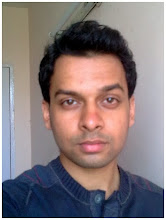Quantitative forecasting or statistical methods of forecasting demand is often referred to as objective analysis.
Quantitative forecasting can be characterized by one of the two basic techniques:
a) Time series - where the future tends to look and behave like the past, or
b) Relational - where the future is dependent on the direction of a variety of factors.
These techniques use statistical methods for projecting from historical data. The main assumption is that the historical pattern will continue into the future.
Extrapolation involves making statistical projections based on historical trends that are projected for a specified period of time into the future. It is usually relevant when causal factors will remain constant or are not understood. An important principle for extrapolation is to use long time-series when developing a forecast. Two major types of time-series methods are moving averages and exponential smoothing; with exponential smoothing being the most popular and cost-effective of the extrapolation methods.
Moving Average is used to determine the average of demand over a given time period. The weighted moving average technique allows each period in the calculation to carry its own weight. The user can specify that recent demand will be weighted more heavily in the calculation than older data. Nevertheless, moving average techniques are most appropriate for stable demand patterns, when demand does not exhibit trend or seasonality characteristics with demand forecasts lagging behind in their ability to predict future demand if trend or seasonality exists.
Exponential smoothing is a form of weighted moving average in which the new forecast is a weighted sum of the actual observed sales or other variable in the current period and the weighted forecast of that variable for the period.
Quantitative forecasting can be characterized by one of the two basic techniques:
a) Time series - where the future tends to look and behave like the past, or
b) Relational - where the future is dependent on the direction of a variety of factors.
These techniques use statistical methods for projecting from historical data. The main assumption is that the historical pattern will continue into the future.
Extrapolation involves making statistical projections based on historical trends that are projected for a specified period of time into the future. It is usually relevant when causal factors will remain constant or are not understood. An important principle for extrapolation is to use long time-series when developing a forecast. Two major types of time-series methods are moving averages and exponential smoothing; with exponential smoothing being the most popular and cost-effective of the extrapolation methods.
Moving Average is used to determine the average of demand over a given time period. The weighted moving average technique allows each period in the calculation to carry its own weight. The user can specify that recent demand will be weighted more heavily in the calculation than older data. Nevertheless, moving average techniques are most appropriate for stable demand patterns, when demand does not exhibit trend or seasonality characteristics with demand forecasts lagging behind in their ability to predict future demand if trend or seasonality exists.
Exponential smoothing is a form of weighted moving average in which the new forecast is a weighted sum of the actual observed sales or other variable in the current period and the weighted forecast of that variable for the period.

Comments
Post a Comment